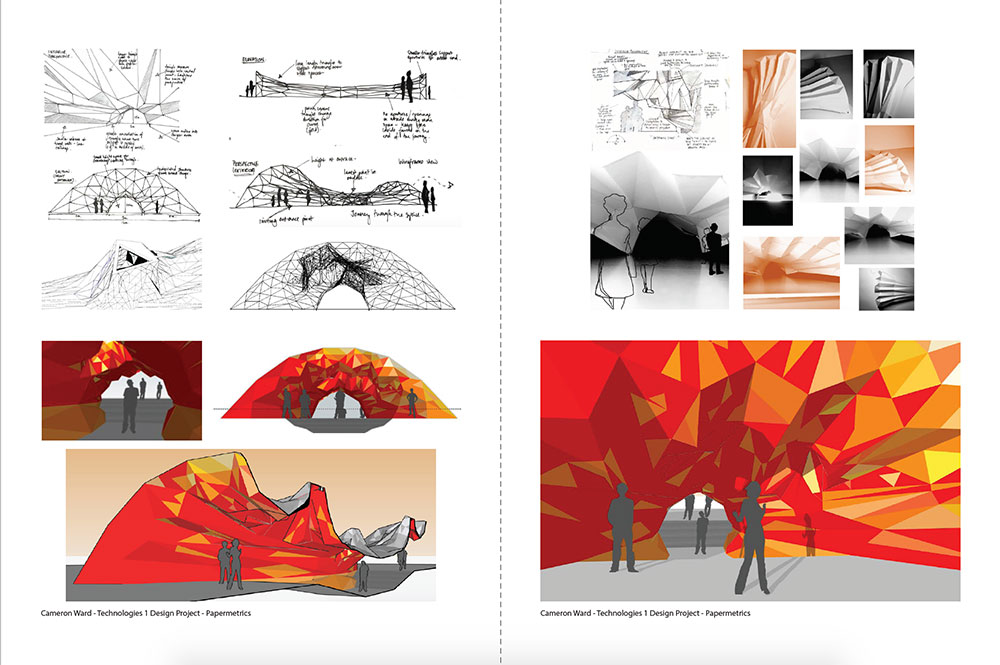The BA Technologies unit is undertaken as a 30-credit unit with a common structure in each year. Generic learning in the Technologies unit via lectures, case studies and design projects is usefully aligned and complementary to specific propositional applications in design projects in Studio contexts.
Technologies acts to create an independent academic discourse of architectural technology. This is structured to enable students to contextualise, inform, inspire and justify their design propositions on the basis of their experience and expertise of the architectural discipline and its correlates. This discourse sequentially builds a catalogue of concepts, experiences, analyses, applications and experiments focused on answering the question: How do I do this?
The Technologies unit provides students with skills to critically dissect and deconstruct the structural, material and environmental performance of architectural precedents in an operative manner, seeing the built history of architecture as a ‘realisation library’ to draw from. Assignments develop the material realisation skills and understanding of students through increasing levels of sophistication and authorship in their design projects.
Project Summary
In year one, existing applications and techniques are examined through a series of lectures and analysis exercises which support a subsequent holistic analyses of small scale (but often structurally or environmentally complex) case studies. Design projects explore digital modelling and fabrication through iterative qualitative testing.
Across the three years, the Technologies Design Project is systematic using a framework of appraisals, analyses and iterative design testing to guide students in identifying key performance parameters for their projects and linking them to the opportunities they offer for creative, integrated, architectural design. Technologies design projects are intentionally distinct from others undertaken on the course, with different starting points, methods and outputs, enriching students’ portfolios and preparing them for scenarios in professional architectural design practice.


